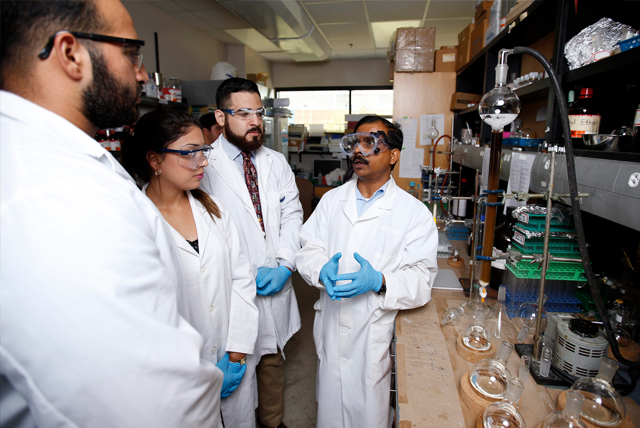Characterization of a Novel Bacillus thuringiensis Phenotype Possessing Multiple Appendages Attached to a Parasporal Body
Document Type
Article
Publication Date
1-2011
Abstract
Bacillus thuringiensis is a bacterium best known for its production of crystal-like bodies comprised of one or more Cry-proteins, which can be toxic to insects, nematodes or cancer cells. Although strains of B. thuringiensis have occasionally been observed with filamentous appendages attached to their spores, appendages in association with their parasporal bodies are extremely rare. Herein we report the characterization of Bt1-88, a bacterial strain isolated from the Caribbean that produces a spore–crystal complex containing six long appendages, each comprised of numerous thinner filaments approximately 10 nm in diameter and 2.5 μm in length. Each of the multi-filament appendages was attached to a single, small parasporal body located at one end of the bacterial spore. Biochemical tests, 16S rDNA gene sequencing, and the identification of two Cry proteins by partial protein sequencing (putatively Cry1A and Cry2A), unambiguously identified Bt1-88 as a strain of B. thuringiensis. Bt1-88 represents the second reported strain of B. thuringiensis possessing a parasporal body/appendage phenotype characterized by one or more long appendages, comprised of numerous filaments in association with a parasporal body. This finding suggests that Bt1-88 is a member of a new phenotypic class of B. thuringiensis, in which the parasporal body may perform a novel structural role through its association with multi-filament appendages.
Recommended Citation
Ventura-Suárez, A., Cruz-Camarillo, R., Rampersad, J. et al. Characterization of a Novel Bacillus thuringiensis Phenotype Possessing Multiple Appendages Attached to a Parasporal Body. Curr Microbiol 62, 307–312 (2011). https://doi.org/10.1007/s00284-010-9678-2
Publication Title
Current Microbiology
DOI
https://doi.org/10.1007/s00284-010-9678-2



Comments
Reprints and Permissions
https://rdcu.be/dkNpo